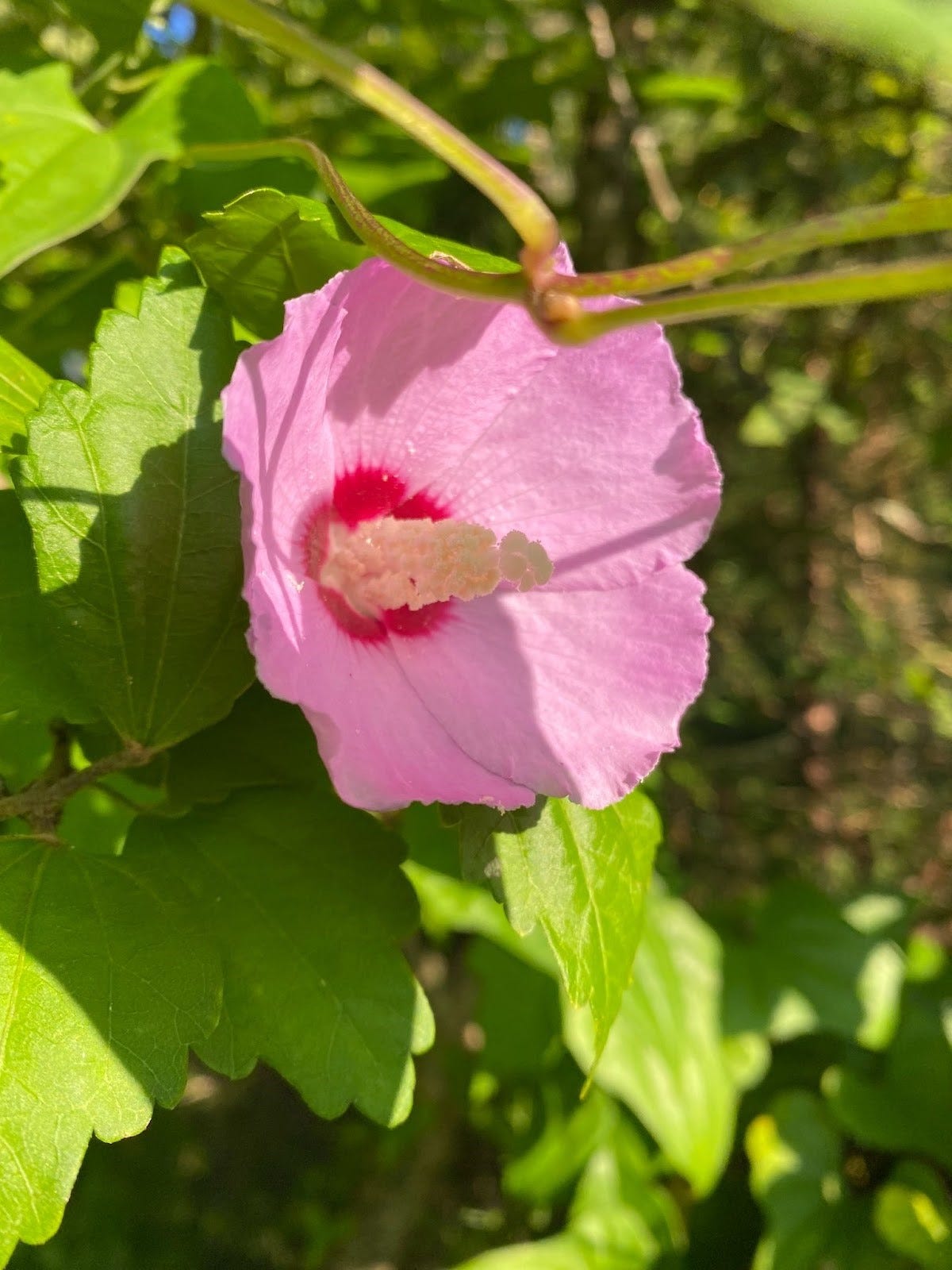What’s blooming at Sandy Creek?
Whether you’re an avid botanist, a flower enthusiast, or just like to admire beautiful things, Sandy Creek Park holds many hidden environmental gems within the bustle and noise of the city. Sandy Creek is located on the site of one of Durham’s old sewage treatment plants. The land for this park was acquired by the city of Durham in 1928. In 1999, Durham Parks and Recreation submitted an application to the North Carolina Parks and Recreation Trust Fund to construct an asphalt trail, a picnic shelter, restroom facility and parking lot. That project was completed in 2003, and thanks to help of committees, grants, and the hard work of hundreds of volunteers, Sandy Creek Park is a beloved city park enjoyed by many. Because Sandy Creek used to be a sewage plant, all the flora and fauna found there is because of restoration efforts. The restored grassy marshes, the towering trees, the fruit-filled shrubs, and the sandy riverbanks are what make Sandy Creek the beautiful park that it is today.
All that being said, there are many beautiful flowers blooming right now during this fall season at Sandy Creek Park, and they definitely deserve a spotlight.
Keep your eyes peeled for the alluring, amethyst-colored flower, Carolina horsenettle. This flower is native to North Carolina which means the flower has evolved naturally in this specific area without human intervention. Carolina horsenettle is a member of the Solanaceae, or nightshade, family which also includes tomatoes, potatoes, eggplants, and peppers. In North Carolina, this flower is found in all counties and is abundant throughout the state. The flower is star-shaped, but beware; it contains a toxin known as solanine and is toxic to humans and animals!
Another botanical treasure at Sandy Creek is the common hibiscus, otherwise known as the Rose of Sharon. It is not native to North Carolina and some environmentalists would even consider it invasive. The flower is native to east Asia. Nevertheless, its beauty is undeniable, and it can still be appreciated! The common hibiscus is a member of the Malvaceae, or mallows, family. This flower looks like a bursting bubblegum bubble and believe it or not, the entire hibiscus plant is edible, and the flowers are often used to make tea in Asai and Africa.
Additionally, you can find the common evening-primrose in full bloom. Just like the Carolina horsenettle, the common evening-primrose is native to North Carolina. It is a drought tolerant plant that can grow in disturbed areas, thickets, and waste ground. This flower is very important to the ecosystem because it is a food source for stunning, pink and yellow primrose moth.The primrose moth is named after the common evening-primrose because its larvae feed on primrose flowers. The adult moths apparently find the common evening-primrose flowers because of the mild, lemon fragrance they emit.
Next up is the breathtaking beauty known as the cardinal flower. It is also native to North Carolina, and it is commonly found in wet areas throughout the state. It blooms bright, red flowers on tall spikes that attract hummingbirds and butterflies. It is a member of the Campanulaceae, or bellflower, family. Like the Carolina horsenettle, the cardinal flower is toxic to humans and animals.
The last botanical spotlight has to go to the clematis, otherwise known as woodbine or old man’s beard.Technically, clematis is a vine that flowers. This vine can grow up to twenty feet high and has showy yet elegant white blooms that are on display from August to October. It is a member of the Ranunculaceae, or buttercup, family. Its name derives from the Greek word klēmatis, meaning broken branches, perhaps owing to its fragile stems.
Sandy Creek Park stands as a testament to the remarkable transformation of a once industrial site into a haven for nature enthusiasts and casual admirers alike. Through dedicated restoration efforts, this park has become a vibrant sanctuary where both native and non-native plant species thrive. The array of blooming flowers each season highlights the park’s ecological richness and underscores the beauty that can emerge from thoughtful restoration. Hopefully, you feel inspired to visit Sandy Creek this fall and as you wander through the park, take a moment to appreciate the delicate flowers that are right outside your door!








